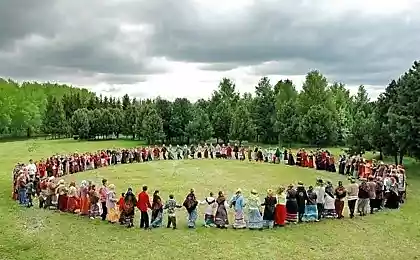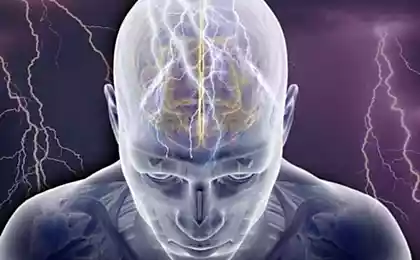538
Kimberly Brownlie: self-sufficient person is a cultural myth, divorced from real life
Real isolation is much worse than the stress that we experience in the societyassociate Professor of legal and moral philosophy at the University of Warwick, PhD Kimberly Brownlie explained why self-sufficient person is a cultural myth, divorced from real life, and reflect on what is the true power of man.
"The great lone fascinating. Henry David Thoreau Boldinskogo on the shore of the pond, Buddhist monks in their hermitages, literary heroes, such as Robinson they are all romantic heroes of history about the successful single-player survival. Their environment — the desert. Their apparent victory is the result of firmness of character, ingenuity and independence.

One of the reasons why these characters are attracted to, is that, ironically, their cases are encouraging. They create a comforting impression that someone can develop in isolation, as they got it.
This comfort has found its concise expression in the statement made by Dr. Stockman at the end of the book "Enemy of the people" (1882) Henrik Ibsen, where locals were subjected to persecution by the hero after he said that the city's tourist spas infected. Stockman declares: "the strongest man in the world — the one who is most alone".
Great singles epitomize the idea of freedom from the vagaries and stresses of public life. As human beings we are vulnerable and unable to hurt each other's mood, inclinations, ideology, perceptions, knowledge and ignorance. We are vulnerable to our public agreements, policies and hierarchies. We need the approval of other people or their help to obtain additional resources. When we are young and when we are old, we are also vulnerable because our life becomes happy only when other people care about us.
It is not surprising that "Robinson Crusoe" is one of the most famous novels in history: there is comfort in independence, self-sufficient hermit. But this romantic image of the solitary life rests on erroneous ideas about the exclusivity of the Brahmins and the nature of social exclusion.
Famous hermits, as in real life and in fiction, always men. They are usually young and healthy. Usually they have neither children nor wife. And they embody a strong meaningful self-sufficiency with which few could compete. But if you look at the details of their stories, we find evidence that they are not entirely self-sufficient individuals. Walden pond Thoreau is just an hour's walk from the town of Concord (Massachusetts), and Thoreau visited the city regularly during his stay in his shelter. In addition, he always kept three chairs prepared for guests (one chair for solitude, two for friendship, three for society), and noticed that it is sometimes 25 or 30 souls under his roof.
Buddhist monks, while they can stay in the silence for several months, at the same time are supported and fed his disciples and laity. In addition, they undergo years of training before going into seclusion, most of which focuses on the cultivation of deep social conditions of the heart and mind, such as compassion, loving kindness and joy from the happiness of others.
Even ibsenovskom doctor Stockmedium his wife and daughter, close to him, when he triumphantly declares that the strongest man is he who is most alone.
One of the real ascetics, who seem to differ is Richard Proenneke, retired military carpenter and naturalist, who lived alone lake twin lakes (Alaska) for nearly 30 years. He recorded his life on videotape, which is subsequently used to make a documentary "Alone in the wild" (2004). Intermittently Brenneke received stocks from the pilot flying a sparsely populated area, but in the winter his house in twin lakes was often unavailable, so he was left all alone.
Of course, Brenneke, like other great single, had a complex set of acquired social skills that made his life possible. All that surrounded him, what was the background of his life is cruel and rich wild priod.
However, the "wildness" is not only the source of sensory stimulation, but also interspecific interactions. In the natural world of the great singles find companions. Have Brenneke was a favorite bird. He also watched the movement of many species. Robinson Crusoe had a dog, two cats, a few goats and a parrot, and later he had a companion – a man named "Friday". And another character like Crusoe, — the runaway 12-year-old Sam Gribly, the protagonist of children's books gene Graphed George "My side of the mountain" (1959), takes the Falcon chick from the nest, teaches him and calls him "Ugly" (Frightful). He also gets semi-manual a weasel he calls the Baron.
Of the same kind would be anthropomorphizing happens in the movie "cast away" (2000) where Tom Hanks, who seems to be devoid of any contact with animals on a desert island, personalisiere volleyball, makes his face, calls him "Wilson" and gets very upset when he lost.
Real permanent exclusion is not romantic. In fact, it is much worse than the stress that we experience in society. In contrast to the success of military-trained Brenneke, inexperienced hiker Christopher McCandless died of starvation in Alaska in 1992-m to year. Thus, going alone into the wild with a small number of stocks, he became a victim of fantasies about a desert hermit.
In addition, people who have experienced undesirable social exclusion (among them American journalist Jerry Levin, and Terry Anderson, imprisoned in Lebanon as political prisoners by the Hezbollah in the 1980-ies), acknowledge that it's painful. Another political prisoner Shane Bauer, who was held in incommunicado detention for 26 months in Iran, described the horror of his experience and the desperate desire to reconnect with other people, even if his kidnappers.
These reports confirmed the increasing amount of psychological evidence demonstrating that the maintenance of social contacts, interaction and inclusion are an essential minimum for a decent human life and — even further — for the welfare of the people. For the most part, we need each other; we cannot thrive or even survive without each other. These basic needs are the basis for a number of rights which we often neglect — for example, the right to be part of a network of social relations.

In our individualistic Western culture, where the romantic image of the great lone prevails, it takes a lot of compelling arguments to show that we need to adopt a different model of "a strong man". We could start with the idea that true power lies in the ability to be sensitive to others ' pain and suffering, openness to intimacy and in contact with other people's needs, preferences, contempt and hope. The strongest person may be the one who allows himself to be vulnerable to others and remains determined to survive this and become better. The strongest man in the world – one who is most connected to other" published
© Kimberly Brownlie
P. S. And remember, just changing your mind - together we change the world! ©
Source: //monocler.ru/samodostatochnost-eto-mif/
"The great lone fascinating. Henry David Thoreau Boldinskogo on the shore of the pond, Buddhist monks in their hermitages, literary heroes, such as Robinson they are all romantic heroes of history about the successful single-player survival. Their environment — the desert. Their apparent victory is the result of firmness of character, ingenuity and independence.

One of the reasons why these characters are attracted to, is that, ironically, their cases are encouraging. They create a comforting impression that someone can develop in isolation, as they got it.
This comfort has found its concise expression in the statement made by Dr. Stockman at the end of the book "Enemy of the people" (1882) Henrik Ibsen, where locals were subjected to persecution by the hero after he said that the city's tourist spas infected. Stockman declares: "the strongest man in the world — the one who is most alone".
Great singles epitomize the idea of freedom from the vagaries and stresses of public life. As human beings we are vulnerable and unable to hurt each other's mood, inclinations, ideology, perceptions, knowledge and ignorance. We are vulnerable to our public agreements, policies and hierarchies. We need the approval of other people or their help to obtain additional resources. When we are young and when we are old, we are also vulnerable because our life becomes happy only when other people care about us.
It is not surprising that "Robinson Crusoe" is one of the most famous novels in history: there is comfort in independence, self-sufficient hermit. But this romantic image of the solitary life rests on erroneous ideas about the exclusivity of the Brahmins and the nature of social exclusion.
Famous hermits, as in real life and in fiction, always men. They are usually young and healthy. Usually they have neither children nor wife. And they embody a strong meaningful self-sufficiency with which few could compete. But if you look at the details of their stories, we find evidence that they are not entirely self-sufficient individuals. Walden pond Thoreau is just an hour's walk from the town of Concord (Massachusetts), and Thoreau visited the city regularly during his stay in his shelter. In addition, he always kept three chairs prepared for guests (one chair for solitude, two for friendship, three for society), and noticed that it is sometimes 25 or 30 souls under his roof.
Buddhist monks, while they can stay in the silence for several months, at the same time are supported and fed his disciples and laity. In addition, they undergo years of training before going into seclusion, most of which focuses on the cultivation of deep social conditions of the heart and mind, such as compassion, loving kindness and joy from the happiness of others.
Even ibsenovskom doctor Stockmedium his wife and daughter, close to him, when he triumphantly declares that the strongest man is he who is most alone.
One of the real ascetics, who seem to differ is Richard Proenneke, retired military carpenter and naturalist, who lived alone lake twin lakes (Alaska) for nearly 30 years. He recorded his life on videotape, which is subsequently used to make a documentary "Alone in the wild" (2004). Intermittently Brenneke received stocks from the pilot flying a sparsely populated area, but in the winter his house in twin lakes was often unavailable, so he was left all alone.
Of course, Brenneke, like other great single, had a complex set of acquired social skills that made his life possible. All that surrounded him, what was the background of his life is cruel and rich wild priod.
However, the "wildness" is not only the source of sensory stimulation, but also interspecific interactions. In the natural world of the great singles find companions. Have Brenneke was a favorite bird. He also watched the movement of many species. Robinson Crusoe had a dog, two cats, a few goats and a parrot, and later he had a companion – a man named "Friday". And another character like Crusoe, — the runaway 12-year-old Sam Gribly, the protagonist of children's books gene Graphed George "My side of the mountain" (1959), takes the Falcon chick from the nest, teaches him and calls him "Ugly" (Frightful). He also gets semi-manual a weasel he calls the Baron.
Of the same kind would be anthropomorphizing happens in the movie "cast away" (2000) where Tom Hanks, who seems to be devoid of any contact with animals on a desert island, personalisiere volleyball, makes his face, calls him "Wilson" and gets very upset when he lost.
Real permanent exclusion is not romantic. In fact, it is much worse than the stress that we experience in society. In contrast to the success of military-trained Brenneke, inexperienced hiker Christopher McCandless died of starvation in Alaska in 1992-m to year. Thus, going alone into the wild with a small number of stocks, he became a victim of fantasies about a desert hermit.
In addition, people who have experienced undesirable social exclusion (among them American journalist Jerry Levin, and Terry Anderson, imprisoned in Lebanon as political prisoners by the Hezbollah in the 1980-ies), acknowledge that it's painful. Another political prisoner Shane Bauer, who was held in incommunicado detention for 26 months in Iran, described the horror of his experience and the desperate desire to reconnect with other people, even if his kidnappers.
These reports confirmed the increasing amount of psychological evidence demonstrating that the maintenance of social contacts, interaction and inclusion are an essential minimum for a decent human life and — even further — for the welfare of the people. For the most part, we need each other; we cannot thrive or even survive without each other. These basic needs are the basis for a number of rights which we often neglect — for example, the right to be part of a network of social relations.

In our individualistic Western culture, where the romantic image of the great lone prevails, it takes a lot of compelling arguments to show that we need to adopt a different model of "a strong man". We could start with the idea that true power lies in the ability to be sensitive to others ' pain and suffering, openness to intimacy and in contact with other people's needs, preferences, contempt and hope. The strongest person may be the one who allows himself to be vulnerable to others and remains determined to survive this and become better. The strongest man in the world – one who is most connected to other" published
© Kimberly Brownlie
P. S. And remember, just changing your mind - together we change the world! ©
Source: //monocler.ru/samodostatochnost-eto-mif/
Equipment NIG: how to solve the problem of any complexity
10 stories that will make you believe in fate























